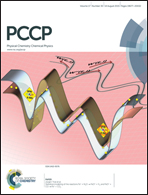Rate constants for the slow Mu + propane abstraction reaction at 300 K by diamagnetic RF resonance
Abstract
The study of kinetic isotope effects for H-atom abstraction rates by incident H-atoms from the homologous series of lower mass alkanes (CH4, C2H6 and, here, C3H8) provides important tests of reaction rate theory on polyatomic systems. With a mass of only 0.114 amu, the most sensitive test is provided by the rates of the Mu atom. Abstraction of H by Mu can be highly endoergic, due to the large zero-point energy shift in the MuH bond formed, which also gives rise to high activation energies from similar zero-point energy corrections at the transition state. Rates are then far too slow near 300 K to be measured by conventional TF-μSR techniques that follow the disappearance of the spin-polarised Mu atom with time. Reported here is the first measurement of a slow Mu reaction rate in the gas phase by the technique of diamagnetic radio frequency (RF) resonance, where the amplitude of the MuH product formed in the Mu + C3H8 reaction is followed with time. The measured rate constant, kMu = (6.8 ± 0.5) × 10−16 cm3 s−1 at 300 K, is surprisingly only about a factor of three slower than that expected for H + C3H8, indicating a dominant contribution from quantum tunneling in the Mu reaction, consistent with elementary transition state theory calculations of the kMu/kH kinetic isotope effect.


 Please wait while we load your content...
Please wait while we load your content...